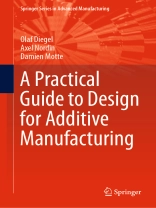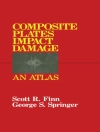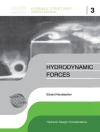This book provides a wealth of practical guidance on how to design parts to gain the maximum benefit from what additive manufacturing (AM) can offer. It begins by describing the main AM technologies and their respective advantages and disadvantages. It then examines strategic considerations in the context of designing for additive manufacturing (Df AM), such as designing to avoid anisotropy, designing to minimize print time, and post-processing, before discussing the economics of AM.
The following chapters dive deeper into computational tools for design analysis and the optimization of AM parts, part consolidation, and tooling applications. They are followed by an in-depth chapter on designing for polymer AM and applicable design guidelines, and a chapter on designing for metal AM and its corresponding design guidelines. These chapters also address health and safety, certification and quality aspects. A dedicated chapter covers the multiple post-processing methods for AM, offering the reader practical guidance on how to get their parts from the AM machine into a shape that is ready to use. The book’s final chapter outlines future applications of AM.
The main benefit of the book is its highly practical approach: it provides directly applicable, “hands-on” information and insights to help readers adopt AM in their industry
Mục lục
Introduction to Additive Manufacturing.- Additive Manufacturing Technologies.- Df AM Strategic Design Considerations.- Computational Tools for Design Analysis and Optimization of AM Parts.- Guidelines for Part Consolidation.- Guidelines for AM Tooling Design.- Design for Polymer AM.- Polymer Design Guidelines.- Design for Metal AM.- Metal AM Guidelines.- Other AM Considerations.- Post-Processing.- The Future of Additive Manufacturing.
Giới thiệu về tác giả
Olaf Diegel is both an educator and a practitioner of additive manufacturing and product development with an excellent track record of developing innovative solutions to engineering problems. In his role as professor of product development, in the department of design sciences of the faculty of engineering at Lund University, in Sweden, he is heavily involved in all aspects of product development and is widely published in the areas of additive manufacturing and rapid product development. In his consulting practice he develops a wide range of products for companies around the world. Over the past three decades he has developed over 100 commercialized new products including innovative new theatre lighting products, security and marine products and several home health monitoring products and, for this work, has received numerous product development awards. Over the last 25 years, Olaf has become a passionate follower of 3D printing (additive manufacturing). In 2012, Olaf started manufacturing a range of 3D printed guitars and basses that has developed into a successful little side-business (and gives Olaf the therapy he needs in allowing him to make things that are a blend of high-technology and traditional hand-crafting).
Axel Nordin holds an M. Sc. in Mechanical Engineering from Lund University, Sweden, and a Ph.D. of Engineering from the division of Machine Design. He has participated in several government funded research projects. His work is mainly concerned with studying aspects of integrating complex morphologies into bespoke products, such as computational, manufacturing, structural, and usability challenges, as well as in topology optimisation and generative design, and how these can be applied in the field of design for additive manufacturing.
Damien Motte is an associate professor at the division of product development with the School of Engineering at Lund University, Sweden. He received a Ph D from thesame division, a research master from the Industrial Engineering Laboratory at École Centrale Paris, France, and an MSc in Industrial Engineering at École des Mines d’Albi, France. His area of research focus includes alternative engineering design, design for additive manufacturing, and product development methodologies.












